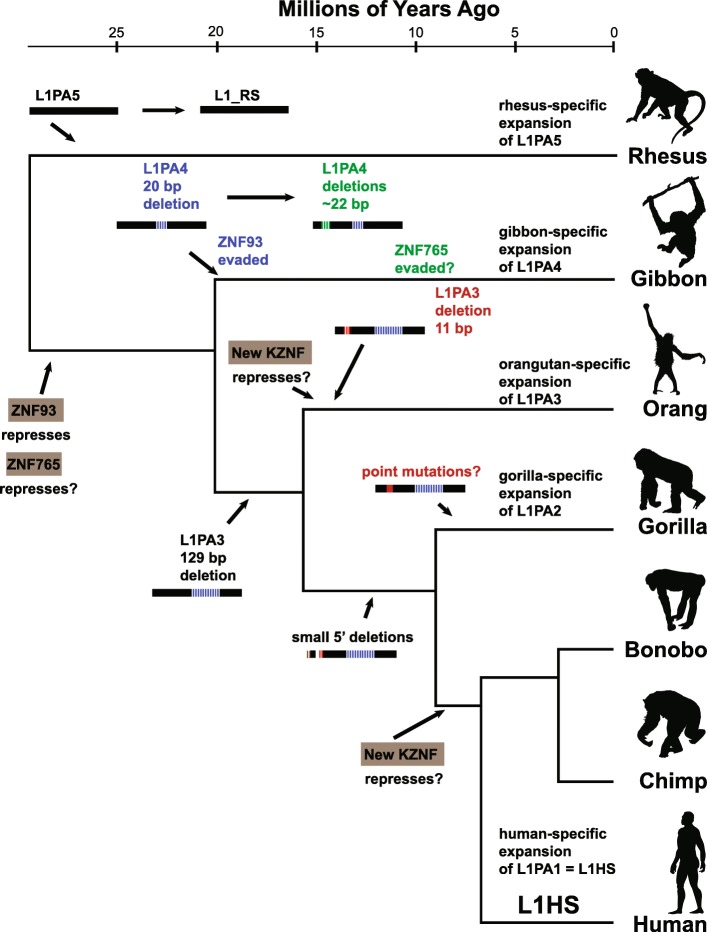Fig. 7.
Model for L1PA evolution in different primate species. L1PA5 was active in the ancestor of human and rhesus, and expanded in a rhesus-specific fashion. ZNF93 evolved in the common ancestor of gibbons and humans (ape ancestor) to repress L1PA4 elements. In gibbons L1PA4 escaped with a small 20 bp deletion (blue); a second gibbon-specific deletion event (green) near the ZNF765 binding site led to gibbon-specific expansion of L1PA4. In great apes (human-orangutan ancestor) a 129 bp deletion (blue) in L1PA3 allowed ZNF93 evasion. In orangutans (possibly in response to an orangutan specific KZNF) a new 11 bp deletion occurred and lead to orangutan-specific expansion of L1PA3. In gorillas, continued expansion of L1PA2 is not associated with deletions in the 5’UTR suggesting that this expansion is due either to lack of a chimp/bonobo/human repression factor or point mutations in gorilla L1PA2. A few gorilla, bonobo and human L1PA2 instances experience small deletions (brown and red); the red deletions are in a similar location to the orangutan L1PA3 deletion. Species silhouette images from phylopic.org

